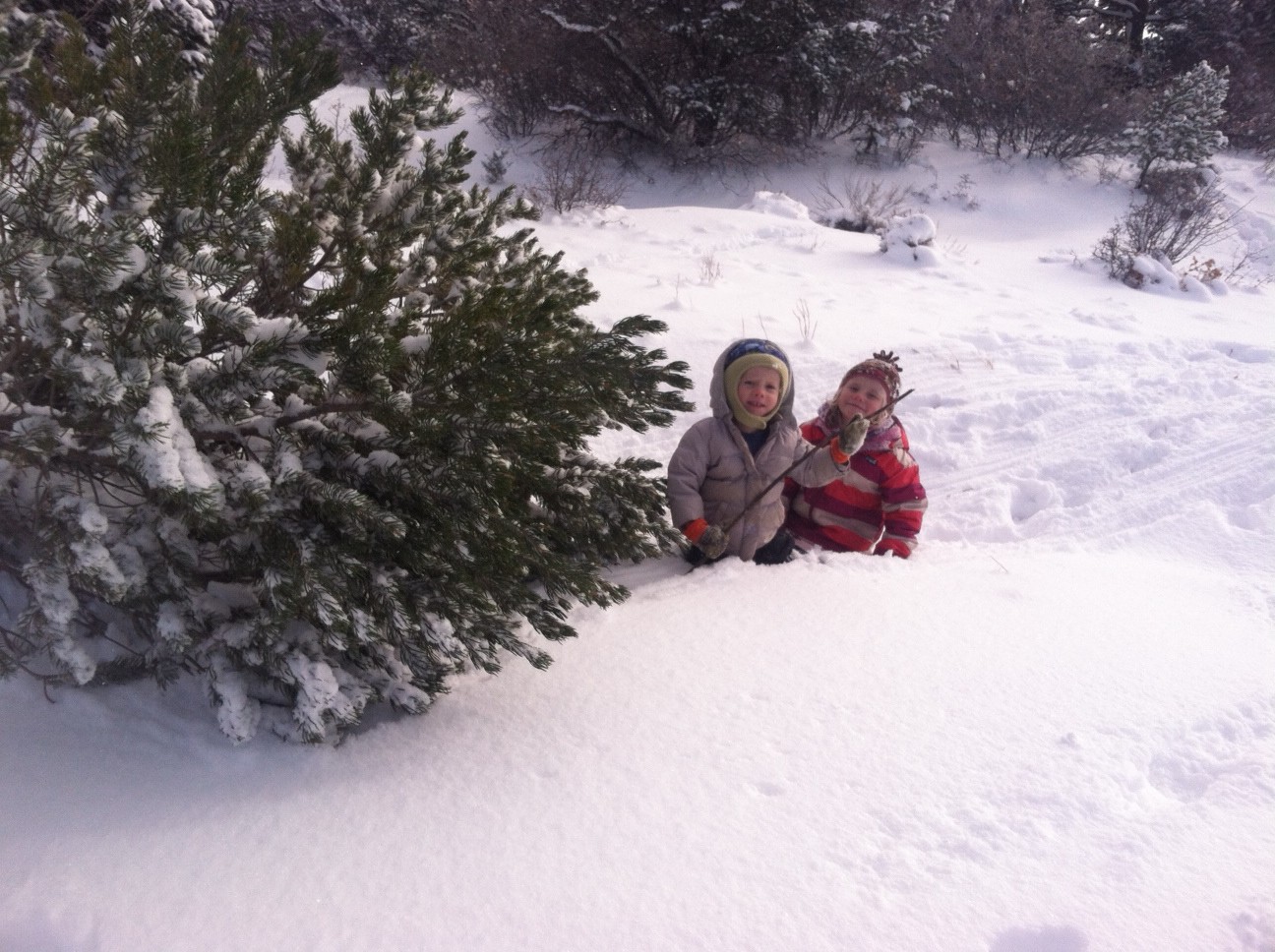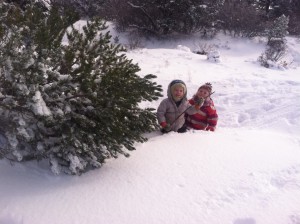
07 Dec SNOW SUNDAY: The Perfect Tree
Everyone has an idea of what makes the perfect holiday tree. For some, it’s the quintessential blue spruce, tall, full, perfectly shaped and dressed. Others like the Charlie  Brown variety, a few scraggly limbs and an awkward tilt, the tree that most needs love. And for others it’s a fake tree, the kind that doesn’t shed pine needles on your carpet or require a trip into the forest or to a tree farm. If you live in more southerly climes, you might even string lights on your agave plant.
Brown variety, a few scraggly limbs and an awkward tilt, the tree that most needs love. And for others it’s a fake tree, the kind that doesn’t shed pine needles on your carpet or require a trip into the forest or to a tree farm. If you live in more southerly climes, you might even string lights on your agave plant.
For me, it’s not about the tree itself. It’s about the journey. The “get.” Walking through the white-out storm we’re having this week and stumbling upon the tree that will fit in our living room and which has enough boughs to hold a few ornaments and lights. One that’s not too thick to saw by hand, and not too heavy to drag out of the woods. I’m probably romanticizing it too much—after all, it is killing a living thing—but there is something magical about finding the tree. The best tree I ever harvested was below the Lone Cone. I pulled the kids on a sled and we wandered around until they found one they loved. They made snow angels while I sawed away at the trunk, and they whooped and hollered when the tiny tree flopped over, like a reeled-in fish into a boat. They were so impressed by the effort that I vowed I’d always do it this way. Sure, tree farms are more sustainable, and you can always buy one from the grocery store lot, but there is something special about living in a place where you can go out and chop down your own tree. This year’s “get” was even more impressive. A longer, snowier hike, a fuller, heavier tree, and a few Griswold family moments trying to get it on the truck and in the house. It was a day that the kids will remember.
If you’re thinking about doing it the old-fashioned way, there are a few rules, a few ways to make sure that you’re “thinning” the forest in a healthy manner and not damaging the environment:
—Buy a permit. They’re just $8, and the money goes to the National Forests. Permits help the agency to regulate how many trees get cut and where they get cut, and it also gives them an opportunity to advise you on which trees to cut.
—Thinner is better. Pick a tree with a trunk six inches (or less) in diameter. Not only will it save you some effort in your sawing, it means you won’t be harvesting the older growth trees.
—Go low. Cut your tree at six inches above ground level. Make sure that any live limbs attached to the stump have been cut off to prevent re-growth. “Topping” a tree, or cutting the upper part off, is bad for the trees.
—Pick one that has friends. There are recommended areas in which to cut: within powerline corridors and densely stocked areas. Pick a tree that’s within ten feet of other trees, as removing it will help the other trees flourish.
Whatever your journey is, chopping down a tree in the forest, picking one out at the Schmid Ranch, or piecing together a fake tree—the important thing is not the tree, and not the presents beneath it. It’s the people you love circling around it. Happy holidays!


Sorry, the comment form is closed at this time.